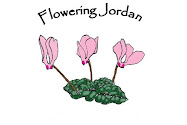Well, we just about did bust, but by God's grace we are are now living in
Mafraq, Jordan.
Located in the northern desert of Jordan, it is about an hour and a half away from our old home in the capital of Amman. I'm finishing most days completely out of steam but I wanted to let friends, family, and other passersby, know that we are alive and mostly well--just MIA for awhile.
Our move was made two weeks ago today, though Dear Husband has been faithfully working on our new home, himself and directing laborers, for over a month. He's also hauled many of our belongs, including a truckload of garden plants and rocks--bless him!--before the moving vans arrived on August 29.
The first 48 hours in our new home were a grueling blur, but we have since passed through survival, then exhaustion mode. I am thanking God for warm water, a working washing machine, a garden space full of potential, lemon trees out my kitchen and bedroom windows, a hard working husband, happy kids, and new kitchen cupboards--everything but the kitchen sink, which will hopefully be installed this week.
I'm also thankful for the many friends who have packed boxes, made a meal, given us an internet fix, and sent words of encouragements and PRAYER. And, thanks, Suzanne, for these words form the movie Hope Floats (which I haven't seen!)
Beginnings are usually hard
Endings are usually sad
It's what's in the middle that counts.
That about sums it up right now







































